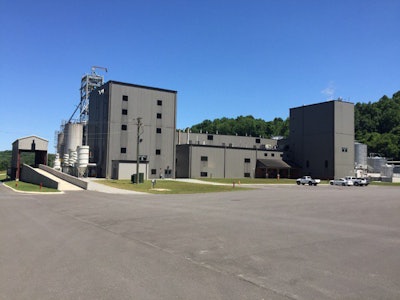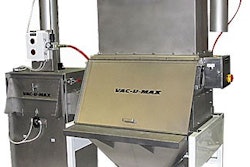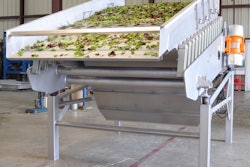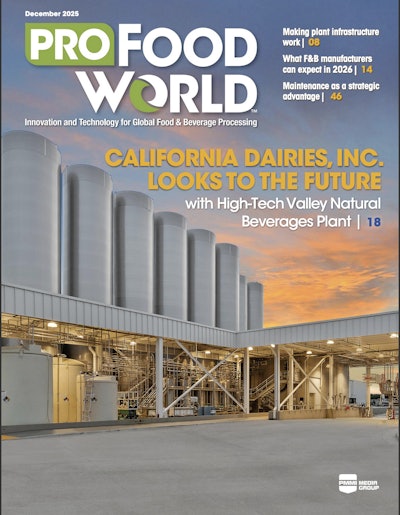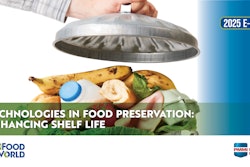The distilled spirits industry has been on an upswing over the past several years with the explosion of interest in craft cocktails and other related consumer trends. According to a report from the Distilled Spirits Council, American whiskey has been the major driver of growth in the distilled spirits industry—which has meant increased demand for iconic brands like Jack Daniel’s. As a result, Jack Daniel’s distillery in Lynchburg, Tennessee, was operating at capacity on a regular basis and needed to expand operations to meet the growing demand.
With no room for expansion in the existing distillery, plans were developed to build a second distillery. The plan for this new facility was to “design an automated plant that preserved existing operating philosophies and that could scale by adding capacity in phases as needed and allow for grain bill flexibility,” said Juan Merizalde-Carrillo, project engineer at Jack Daniel’s Distillery, in a presentation explaining the automation aspects of this new distillery at Siemens Automation Summit 2016.
Merizalde-Carrillo explained that the control system at the existing facility (JD1) was comprised of 18 APACS+ controllers, Simatic PCS 7 operating system and 5,500 I/O points. For the new facility (JD2), “we wanted to implement new operator interface technologies, as well as new instrumentation, wireless networking and have the ability to connect the two plants,” he said. “We also wanted to be able to run JD2 at full capacity with just four Simatic PCS7 controllers and use Siemens Simatic Batch and Route Control software to enable expansion flexibility.”
In a collaborative approach to design the new automation system for JD2, responsibilities for Cross Company’s Integrated Systems Group (which provided system integration services for the project), Siemens and Jack Daniel’s broke out as follows:
- Jack Daniel’s handled development of the plant’s modular design and build as well as the piping and instrumentation diagrams (P&IDs), process requirements, document approval, factory acceptance testing (FAT), device configuration, commissioning and startup.
- Cross Company Integrated Systems Group focused on I/O list development, I/O panel design and build, HMI graphic development and program development for PCS 7, Simatic Batch and Simatic Route Control.
- Siemens focused on hardware and software component selection, license requirements, virtual server setup, virtual machine configuration, Simatic software installation, and configuration and delivery of new field devices.
New plant, new automation
Presenting at Siemens 2016 Automation Summit along with Merizalde-Carrillo, Jeff Clark, systems integration engineer with Cross Company Integrated Systems Group, said that panel design and build activities for JD2 involved the development of 10 panels to connect more 2,000 I/O points and house four PCS7-410 controllers, 22 remote I/O racks and more than 200 I/O cards. A server cabinet houses two host machines, a process historian and an information server.
Delivering wireless connectivity for JD2 was accomplished with Siemens Scalance access points “using iPads as thin clients to access the operating system and client virtual machines via a remote connection,” said Merizalde-Carrillo. “Users can run Simatic Batch and Route Control on iPads.”
Leveraging the increasingly popular trend of virtualization in industrial operations technology applications, Merizalde-Carrillo noted that Jack Daniel’s use of Simatic Virtualization as a service means that virtual machines can be accessed through VMware vSphere hypervisor software on the iPads for maintenance, updating and troubleshooting.
“An added benefit to virtualization is that, if a virtual machine fails, it can easily and quickly be replaced on the host machine,” said Merizalde-Carrillo.
Siemens supplied its Sitrans LR560 to address Jack Daniel’s interest in new instrumentation for JD2. The LR560 is a two-wire, loop powered non-contact grain level measuring device. Merizalde-Carrillo said that non-contact level measuring abilities of the LR560 were important because the measuring technologies previously used by Jack Daniel’s could sometimes damage the grain. “It [LR560] provides continuous level measurement and is unaffected by temperature and dust,” Merizalde-Carrillo said.
P&IDs were used to develop new HMI graphics. “The component imagery was kept as close to the P&ID drawings as possible for operator familiarity,” said Clark. “Standard block icons and faceplates were used for ease of upgrading and consistency.”
Recipes blend old processes and new tech
Fourteen recipes were configured for the new plant, all of which were developed from process descriptions and close communication between Cross Company and Jack Daniels. “The recipes call configured sequences of equipment modules in a specific order to make the product,” said Clark, who noted that the detailed communication between Cross and Jack Daniels around the new functionalities available from Simatic Batch and Route Control resulted in Jack Daniel’s ability to maintain old distillery operating philosophies while incorporating new automation capabilities.
Simatic Batch Control Center illustrates recipe steps for the operators, allows for troubleshooting, and shows the current state of recipe (e.g., complete, idle, held). “If the process is disrupted—for example if more or less corn is needed in the mash—the point at which the batch stopped is indicated so that the process can easily resume from that point,” said Clark.
Recipes can be triggered in the Batch interface. “Recipe steps are clear and it has troubleshooting features,” said Clark. “Master recipes can be modified easily in Batch, as it does not require understanding of the underlying PCS 7 code. Control recipe setpoints are easily adjusted by the operator.”
The Batch and Route Control programs are also used at JD2 for CIP (clean in place) procedures.
Clark explained that equipment modules developed for JD2’s automation system allow “for the use of generalized unit classes in recipes; for example, we run ‘heat mash cooker’, not ‘heat mash cooker #1’ or ‘heat mash cooker #2’. This means that recipes don't have to be recreated for different batches on different production units. Adding new mash cookers or fermenters requires only the addition of the new unit to the unit class.”
Clark noted that they built routes to control the material transfer of mash, yeast media, stillage and cave water in Simatic Route Control as a series of partial routes to reduce configuration effort. “Each segment, when configured, controls certain pieces of equipment,” he said. “This helps with expansion because, as mash cookers are added you can utilize existing partial routes, meaning that only the initial portions of new routes need to be configured; all the rest can be carried over from existing partial routes.”
